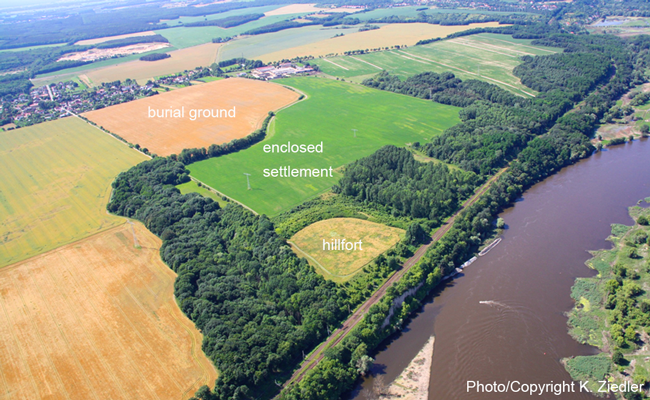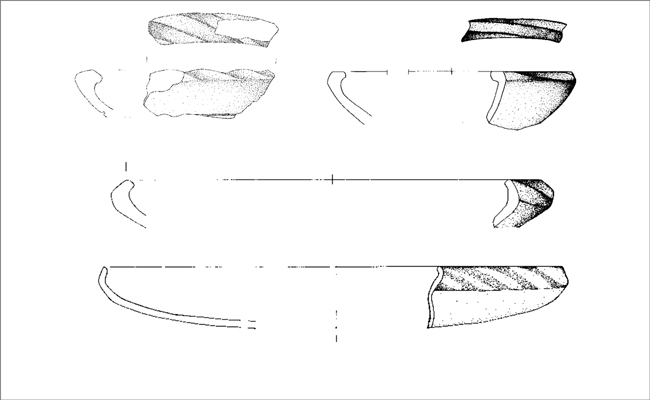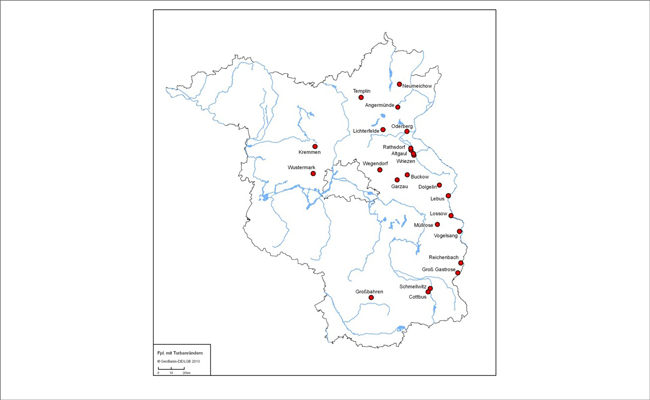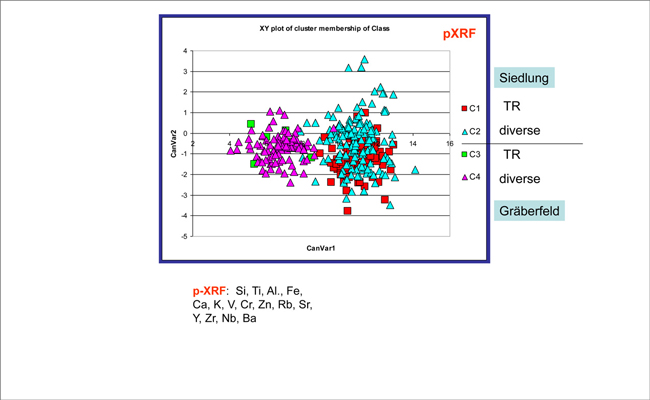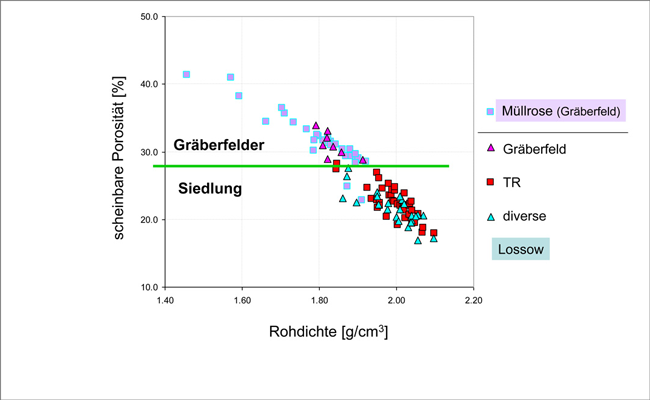The task of this project was to analyze pottery finds of the late Bronze Age hillfort of Lossow to determine the extent to which production centers and distribution regions were connected with central places. The project built on research results obtained during the first funding period of Topoi.
Research
The hillfort of Lossow (Brandenburg) was built as a fortified settlement in the late Bronze Age (15./14. century BC) and is located at an exceptionally rewarding site on the river Oder. After a phase of ca. 500 years in which it was used, an early Iron Age cult center (with a large number of ritual shafts – Kultschächte) developed on this site (2. h. 9th – around 500 BC). Several pieces of evidence indicate that the site of the finds had a central-site character in the Bronze Age (imports such as metal objects, ceramics and salt; bronze processing). During this time there was also a large settlement and a cemetery outside the walls.
A significant number of high quality and highly attractive turban-edged ceramics (Turbanrandkeramik) were found in the hillfort (> 200 pices) and in the cemetery, but not outside the settlement (Fig. 1). The question is whether the workshops that produced these special ceramics were confined to castle centers, and hence whether their function as production and distribution centers for this type of vessel was limited to central places.
The ceramic analysis from contemporaneous settlements and cemeteries in the Brandenburg region were used to draw conclusions regarding local production and distribution center formation (possibly tied to hillforts) and hence regarding reciprocal trade relations. By analyzing local clay pits (10 deposits) and pottery finds from selected sites in the vicinity of the hillfort and comparing the results with the Lossow pottery findings, information was obtained on local pottery production and its distribution environment.
The project analysed 83 pieces of Turbanrandkeramik from the Lossow hillfort and cemetery and 90 pieces Turbanrandkeramik from 22 other contemporaneous settlements and cemeteries in the Brandenburg region (Fig. 2) in order to work out whether there was a central production of this highly specific ceramics in Lossow. A total of 458 samples were analyzed together with the reference ceramic. Different archaeometric pottery analyses were used, such as MGR analyses (Matrix Group by Refiring), pXRF and WD-XRF analyses, physical ceramics properties (like water permeability) and Dünnschliff.
Results
- It could be shown beyond doubt that the raw materials and the technology from each site differs from the others, so that there is no sign whatsoever of a centralized production and a local, regional or supraregional distribution. All the settlements shared the same pottery type and similar value systems, but they produced the pottery themselves.That means: On the level of production and trade no central function of Lossow could be worked out. There was only an exchange of ceramics between Lossow and the settlement of Altgaul (distance 72 km).
- It is probable that the clay pits were used in close proximity to the settlement. The fired clay, which was used for the clay plastering of the houses, comes from a clay pit, which could be located north of the hillfort from Lossow (distance 800 m).
- The comparison between ceramics from the settlement and the cemetery of Lossow shows a surprising result. The technique of production differs clearly, so that the Turbanrandkeramik and other ceramics for the burials were not taken from the regular stock but were produced individually as a part of the burial rite. The ceramics from the settlement in Lossow and those from the cemetery form a separate group (Fig. 3). This means that a different raw material was used for the settlement ceramic than for the cemetery ceramic. Also the cemetery ceramic is of poorer quality than the housing ceramic.
- A comparison with pottery from the nearby Müllrose cemetery (distance of 13 km from the settlement) was of particular interest. This site is characterized by particularly high quality ceramics and an exceptional wealth of grave goods. The ceramic on the two grave fields forms a group (Fig. 4), which shows that a special clay(-pit)was used for the cemetery ceramic. Both cemeteries – Lossow and Müllrose – show that the clay has been specially prepared, it has a high water absorption capacity and the ceramic has a poor quality.
Related Publications
Ines Beilke-Voigt, “Lossow und Lebus. Ein Burgenpaar an der Oder?”, in: Ines Beilke-Voigt and Oliver Nakoinz (Eds.), Enge Nachbarn. Das Problem von Doppelburgen und Mehrfachburgen in der Bronzezeit und im Mittelalter, Berlin: Edition Topoi, 2017, 91–123
Ines Beilke-Voigt, Das jungbronze- und früheisenzeitliche Burgzentrum von Lossow. Ergebnisse der Ausgrabungen 2008 und 2009. Lossow III, 2014

